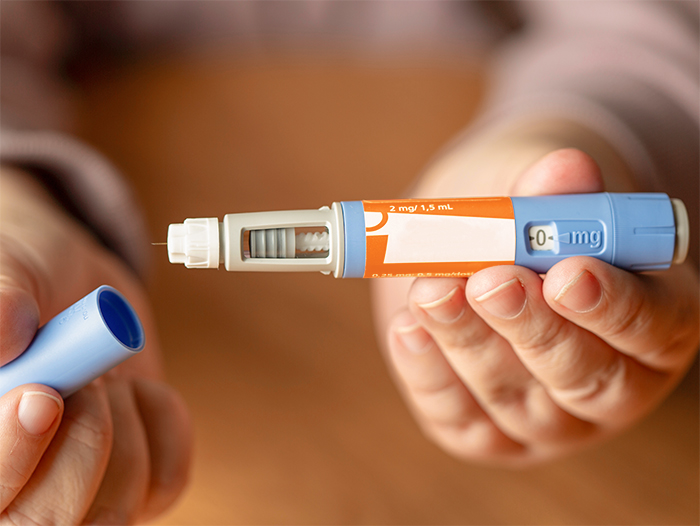Regularly consuming red meat was linked to an increased risk of developing Type 2 diabetes, and those consuming processed meats like bacon, hot dogs, and lunch meat saw an even greater risk, according to a recent study published in The American Journal of Clinical Nutrition.
Study details
For the study, researchers tracked the eating habits of more than 200,000 people who were enrolled in long-term health studies for up to 36 years. They found that those who regularly consumed more than a serving of red meat per day had a much greater risk of developing Type 2 diabetes.
The researchers found that those who ate the most red meat, around two full servings a day, had a 62% increased risk of developing Type 2 diabetes compared to those who ate the least amount of red meat, around two servings per week.
The study did not establish a causal relationship between consuming red meat and diabetes risk and noted that the participants in the study who ate the highest amounts of red meat also had higher body mass indexes (BMI), another major risk factor for developing Type 2 diabetes.
However, the researchers used statistical methods to account for confounding variables like BMI. "We found that about half of the excess risk with red meat consumption was explained by excess body weight," said Walter Willett, from the Harvard T.H. Chan School of Public Health and a co-author on the study, "but there was still an increased risk [of developing diabetes] even after taking into account body weight."
Discussion
Willett said there are several potential factors that could explain the link between red meat consumption and diabetes risk.
"There's evidence that heme iron in red meat may damage the cells in the pancreas that secrete insulin," he said. Other research has suggested eating too much red meat can increase insulin resistance and inflammation.
Research from Suzanne de la Monte at Brown University has also found that compounds formed when nitrites are added to foods — called nitrosamines — could promote insulin resistance diseases, like diabetes.
Both nitrates and nitrites are added to meat during the curing process or as a preservative. "Then when they're heated and eaten, [nitrates and nitrites] get converted into nitrosamines," de la Monte said.
"Red meat has pros and cons," said Ruchi Mathur, an endocrinologist at Cedars-Sinai in Los Angeles. Red meat can be a valuable source of protein, vitamins, and minerals, but it's also high in saturated fat, and "depending on the processing, can be high in sodium and preservatives," Mathur said. "None of these are good for our health."
However, Mathur noted "the debate is far from settled," as most studies that have found a link between red meat and diabetes in humans have been observational and relied on people accurately reporting what they've eaten over the course of a year.
How much red meat should you eat?
Currently, U.S. dietary guidelines don't specify how much red meat you should eat, but a recent review of observational studies suggested limiting daily consumption of unprocessed red meat to around 50 to 100 grams, or roughly 3.5 ounces per day at most, to prevent high blood pressure and cardiovascular disease.
Willett said he would go further than that. "A limit of about one serving per week of red meat would be reasonable for people wishing to optimize health and well-being," he said.
Willett also recommended swapping red meat servings with plant-based proteins like nuts and soy, as they have a lot of polyunsaturated fat which helps protect against disease.
He also warned that swapping red meat for other foods known to increase blood sugar, like ultraprocessed snacks or refined starches like white bread, is "not going to decrease the risk of diabetes."
Xiao Gu, a nutrition researcher at the Harvard T.H. Chan School of Public Health and a co-author on the study, said if you eat red meat every day, you may want to scale back, and agreed that one serving per week is a good goal. "The lower you go, the better," he said. (Aubrey, "Shots," NPR, 10/19; Sheikh, New York Times, 10/20)
As diabetes and obesity heightened individuals’ risk for severe COVID-19, the pandemic placed an outsized spotlight on these diseases over the last two years. Download our report to get strategic insights on four key drivers reshaping the delivery of diabetes and obesity care.
Don't miss out on the latest Advisory Board insights
Create your free account to access 1 resource, including the latest research and webinars.
Want access without creating an account?
You have 1 free members-only resource remaining this month.
1 free members-only resources remaining
1 free members-only resources remaining
You've reached your limit of free insights
Become a member to access all of Advisory Board's resources, events, and experts
Never miss out on the latest innovative health care content tailored to you.
Benefits include:
You've reached your limit of free insights
Become a member to access all of Advisory Board's resources, events, and experts
Never miss out on the latest innovative health care content tailored to you.
Benefits include:
This content is available through your Curated Research partnership with Advisory Board. Click on ‘view this resource’ to read the full piece
Email ask@advisory.com to learn more
Click on ‘Become a Member’ to learn about the benefits of a Full-Access partnership with Advisory Board
Never miss out on the latest innovative health care content tailored to you.
Benefits Include:
This is for members only. Learn more.
Click on ‘Become a Member’ to learn about the benefits of a Full-Access partnership with Advisory Board
Never miss out on the latest innovative health care content tailored to you.



